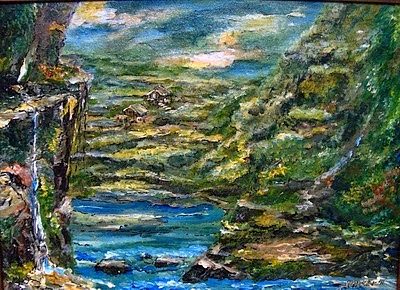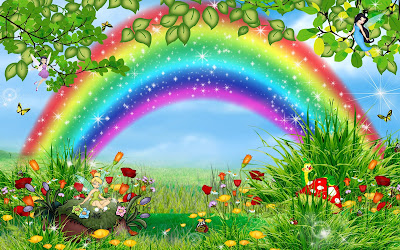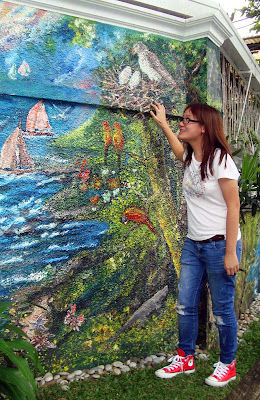Paintings and verses by Dr Abe V Rotor
"Once upon a time, nature was pristine, undefiled and unspoiled. We used to live in a dreamworld of tropical virgin forest, and pure hidden springs, calm ponds, and serene lakes, with majestic purple mountains, crowned with canopied trees. That was when people took only what they needed, caught only what they ate, and lived only in constant touch with a provident earth.
In this age of environmental degradation , resource depletion and unparalleled human population explosion, how can man live and find meaning in his life with nature?" (Dr AS Cabigan - an excerpt from the introduction of The Living with Nature Handbook, by AVR 2003)
Born from the elements of nature, to the elements of art,
in imagery and fantasy;
what takes eons to shape and form, is but a season's part,
an archive out of reality.
Oh, let them be, let them be, school can wait
but not childhood;
they catch not the fish, but adventure and faith
as they grow old.
Community - what concept have we today from that of yesterday
when things we needed were almost free,
and worked less, and spend more time with others and our family,
and thank the Creator for such bounty?
This hidden valley, not for exclusion or seclusion,
but survival from the lust of man,
whose concept of beauty, its very own destruction,
'til everything he created is gone.
And what prevails at the end, we may ask?
Not monuments, relics or any kind,
for through time nature takes over the task
of rebuilding in her own design. ~









































